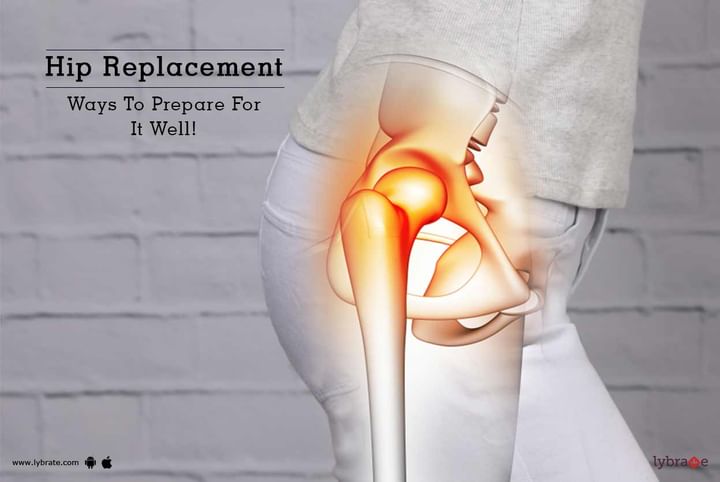Get the App
For Doctors
Login/Sign-up
Last Updated: Jan 03, 2020
BookMark
Report
Hip Replacement - Ways To Prepare For It Well!
Hip replacement is a surgery in which a specialist doctor surgically removes an agonizing hip joint afflicted with arthritis and replaces it with a man-made joint usually produced using metal and plastic elements. It is usually done when all other treatment choices have been tried and have proven unsuccessful in providing satisfactory pain alleviation. The technique is to mitigate the pain in ahip joint, in order to make walking and other physical exercises easier.
The surgical procedure is as follows:
- Hip replacement surgery can be performed generally or by utilizing what is called a non-obtrusive method. The primary difference between the two methodologies is the number of entry points needed for the surgery.
- During standard hip replacement surgery, you are given general anesthesiato relax your muscles; this will keep you from feeling any pain during the surgery or being awake during the surgery. A spinal sedative might be given to counteract pain as an add-on option.
- The specialist will then make a cut at the edge of the hip and move the muscles connected to the highest point of the thighbone to uncover the hip joint.
- Next, the ball part of the joint is taken out by cutting the thighbone with a saw. At this point a fake joint is attached to the thighbone using a material that allows them to stay intact.
- The specialist then readies the surface of the hipbone - evacuating any harmed ligament - and joins the substituting attachment to the hipbone.
- The new ball part of the thighbone is then embedded into the new joint part of the hip. The specialist then reattaches the muscles and shuts the entry point.
There are some things you need to keep in mind and be attentive about, post the surgery. These are as follows:
- You will probably remain in the healing facility for four to six days and may need to remain in bed with a pad between your legs to keep the new hip joint set up.
- A seepage tube will be set in your bladder to help you urinate without having to walk to the bathroom.
- Non-intrusive treatment usually starts the day after surgery and within the days you can go around with a walker or a walking stick.
- You will continue with the non-intrusive treatment for quite a long time which could be a number of months post the surgery.
- For anywhere in the range of six to twelve months after hip replacement surgery, rotating or putting pressure on the operated leg needs to be limited to a great extent. You need to likewise not cross the operated leg past the midline of the body nor turn it inwards.
- You cannot twist the hip past ninety degrees. This includes both twisting forward at the abdomen and crouching.
- Your physical advisor will tell you the methods and equipment that will help you comply with the above rules and precautionary measures while performing every day exercises.
In case you have a concern or query you can always consult a specialist & get answers to your questions!



+1.svg)
